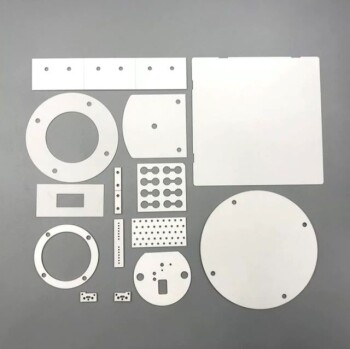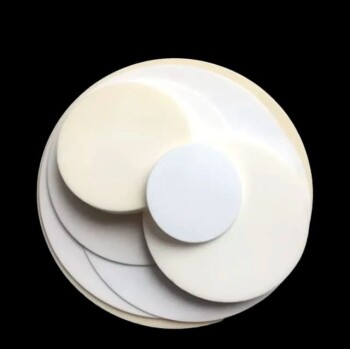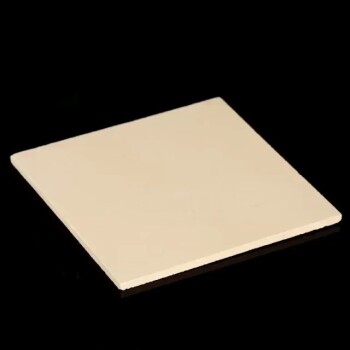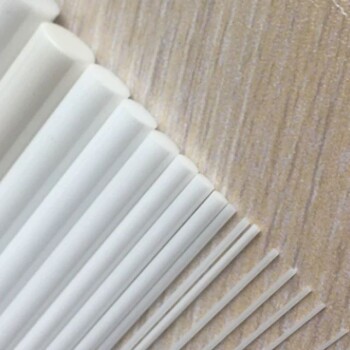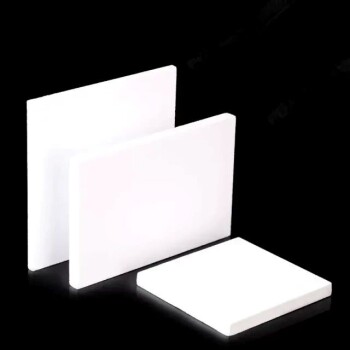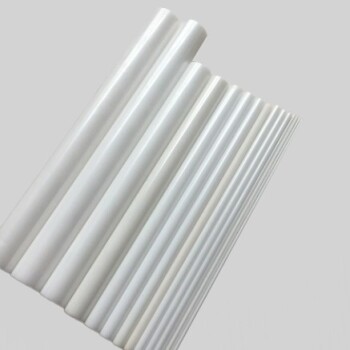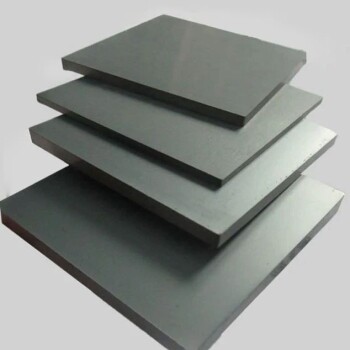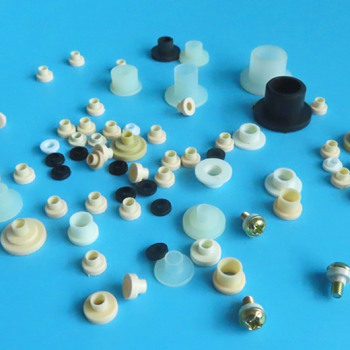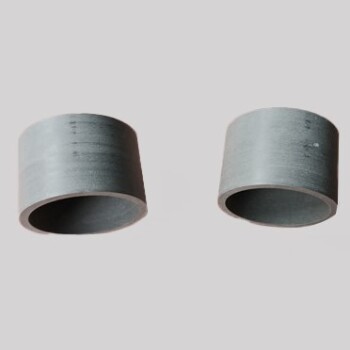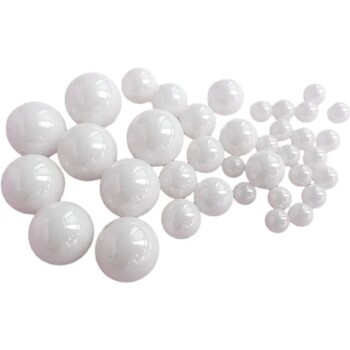Concept of Oxide Ceramics
Definition and Properties
Oxide ceramics are a specialized category of ceramics composed of one or multiple oxide compounds. These materials are renowned for their exceptional mechanical and thermal properties, making them indispensable in various high-tech applications.
Key properties of oxide ceramics include:
- Strength and Hardness: Oxide ceramics exhibit superior strength and hardness, enabling them to withstand high mechanical stresses and abrasive conditions.
- Insulation and Thermal Conductivity: They provide excellent electrical insulation while maintaining high thermal conductivity, making them suitable for both electrical and thermal management applications.
- High-Temperature Resistance: Oxide ceramics can operate effectively at elevated temperatures, retaining their structural integrity and performance under extreme conditions.
- Oxidation and Corrosion Resistance: These materials are highly resistant to oxidation and chemical corrosion, ensuring long-term durability in harsh environments.
These properties collectively position oxide ceramics as critical materials in fields ranging from aerospace and electronics to chemical processing and structural engineering.
Classification of Oxide Ceramics
Single Oxide Ceramics
Single oxide ceramics encompass a range of materials, each with unique properties and applications. The primary materials in this category include alumina ceramic, beryllium oxide, and titanium dioxide ceramics. These materials are distinguished by their exceptional thermal, electrical, and mechanical properties, making them indispensable in various high-tech industries.
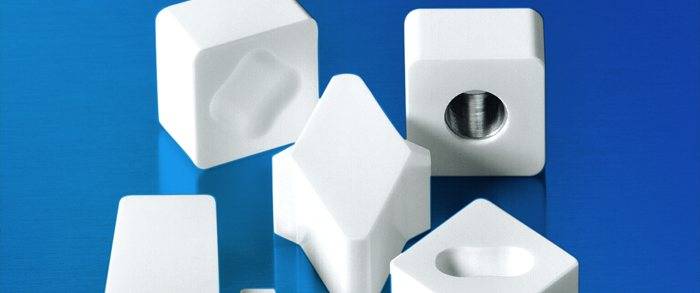
Alumina ceramic, for instance, are renowned for their high hardness and excellent electrical insulation properties. They are commonly used in structural and functional devices, such as insulators and wear-resistant components. Beryllium oxide ceramics, on the other hand, are prized for their exceptional thermal conductivity, making them ideal for high-tech applications like integrated circuit substrates. Titanium dioxide ceramics, known for their high dielectric constant and piezoelectric properties, find applications in sensors and actuators.
The fabrication of single oxide ceramics involves precise control of the sintering process, ensuring the development of a microstructure that optimizes the material's characteristics. This process typically includes the following stages:
- Powder Preparation: The raw materials are ground into fine powders, ensuring uniformity and consistency.
- Pressing: The powder is compacted into the desired shape under high pressure.
- Sintering: The compacted powder is heated to high temperatures, causing the particles to bond and form a solid structure.
Each of these stages is critical to achieving the desired properties in the final ceramic product. The ability to control these processes allows for the customization of ceramics to meet specific application requirements, further enhancing their versatility and utility in various fields.
Composite Oxide Ceramics
Composite oxide ceramics encompass a diverse array of materials, each with unique properties and applications. Among these, spinel, mullite, and lead zirconate titanate (PZT) ceramics stand out for their exceptional characteristics.
- Spinel Ceramics: Known for their high thermal conductivity and mechanical strength, spinel ceramics are often used in high-temperature environments, such as in thermal barrier coatings and refractory materials.
- Mullite Ceramics: Characterized by their excellent thermal shock resistance and high melting point, mullite ceramics are frequently employed in applications requiring durability against thermal cycling, such as furnace linings and ceramic crucibles.
- Lead Zirconate Titanate (PZT) Ceramics: Renowned for their piezoelectric properties, PZT ceramics are integral in various electronic devices, including sensors, actuators, and ultrasonic transducers, due to their ability to convert mechanical stress into electrical signals and vice versa.
These composite oxide ceramics are identified according to DIN EN 60 672, ensuring standardized quality and performance across different applications.
Common Oxide Ceramics
Common oxide ceramics encompass a diverse range of materials, each tailored for specific applications due to their unique properties. Alumina ceramic, for instance, are widely utilized in both structural and functional devices, leveraging their exceptional hardness and thermal stability. These ceramics are often found in cutting-edge technologies, such as in the fabrication of high-performance insulators and wear-resistant components.
Zirconia ceramics are another cornerstone in the field, particularly in structural applications where durability and strength are paramount. Their ability to withstand extreme conditions makes them ideal for use in machinery parts and medical implants.
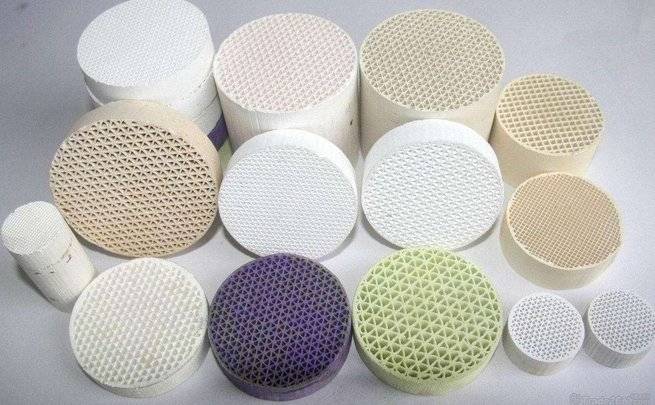
Magnesium oxide ceramics stand out in the realm of refractory materials, offering high-temperature resistance and excellent thermal shock resistance. These properties make them indispensable in industries requiring materials that can endure high-heat environments, such as in furnaces and kilns.
Beryllium oxide ceramics, on the other hand, are prized for their high-tech applications, particularly in the electronics industry. Their exceptional thermal conductivity and electrical insulation properties render them suitable for use in integrated circuit substrates, ensuring efficient heat dissipation and reliable performance in electronic devices.
| Ceramic Type | Primary Applications | Key Properties |
|---|---|---|
| Alumina Ceramic | Structural and functional devices | High hardness, thermal stability |
| Zirconia Ceramics | Structural applications | Durability, strength |
| Magnesium Oxide | Refractory materials | High-temperature resistance, thermal shock resistance |
| Beryllium Oxide | High-tech applications (e.g., IC substrates) | High thermal conductivity, electrical insulation |
Each of these oxide ceramics contributes uniquely to modern technology, underscoring the versatility and importance of oxide ceramics in various industries.
Applications of Oxide Ceramics
Mechanical Field
Ceramic knives are renowned for their exceptional hardness and superior abrasion resistance, making them an ideal choice for cutting materials that are notoriously difficult to handle. The high-hardness nature of these knives allows them to effortlessly slice through materials like metals, composites, and even certain types of ceramics, which are typically resistant to traditional cutting tools.
In the mechanical field, the use of ceramic knives extends beyond just their cutting capabilities. Their ability to maintain sharpness over extended periods, coupled with their resistance to wear and tear, makes them a cost-effective solution for industrial applications. For instance, in manufacturing processes where precision cutting is paramount, ceramic knives ensure that the integrity of the material is preserved, reducing the likelihood of contamination and material degradation.
Moreover, the thermal properties of ceramic knives play a crucial role in their effectiveness. Unlike metal blades that can become soft or brittle under high temperatures, ceramic knives retain their structural integrity and cutting efficiency even in high-temperature environments. This makes them indispensable in industries where heat is a byproduct of the manufacturing process, such as in metalworking and automotive production.
In summary, ceramic knives are not just tools; they are a testament to the advanced properties of oxide ceramics, showcasing their potential in enhancing mechanical processes through superior hardness, durability, and thermal stability.
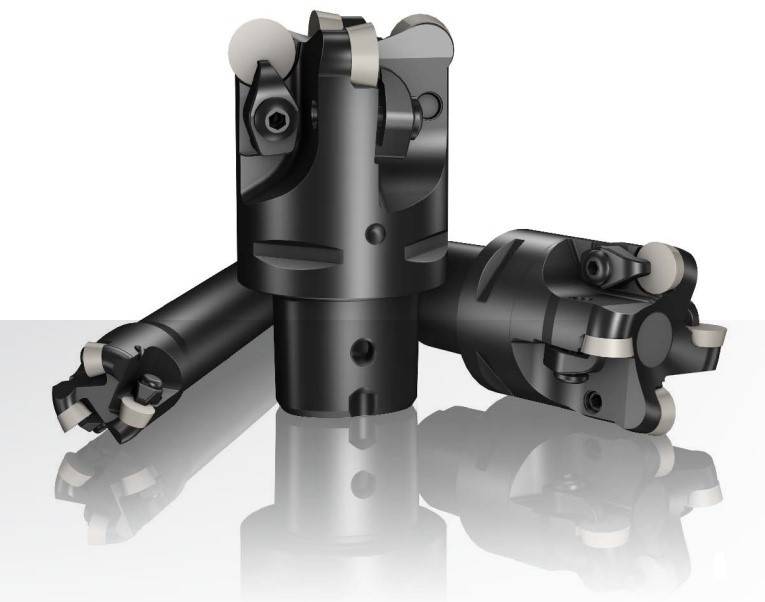
Chemical Field
In the realm of chemical processes, oxide ceramics, particularly those with exceptional stability, play a crucial role. One notable application is the use of evaporation boats in the plating of aluminum foil. These boats are designed to withstand high temperatures and corrosive environments, making them indispensable in the precise and efficient deposition of thin metal layers onto substrates.
| Application | Material | Characteristics |
|---|---|---|
| Evaporation Boats | Oxide Ceramics | High stability, thermal resistance, corrosion resistance |
The stability of oxide ceramics ensures that evaporation boats maintain their structural integrity throughout the chemical process, preventing any contamination or degradation that could compromise the quality of the plated aluminum foil. This makes them an essential component in industries where precision and reliability are paramount, such as in the production of high-performance electronics and advanced packaging materials.
Aerospace Field
In the aerospace industry, the utilization of foam ceramics is pivotal for ensuring the thermal management of spacecraft, particularly in the construction of space shuttle shells. These materials are engineered to excel in both heat insulation and heat transfer, which are critical functions for maintaining the integrity and operational efficiency of space vehicles.
Foam ceramics offer an ideal solution for thermal management due to their unique cellular structure. This structure allows them to effectively insulate against extreme temperatures while facilitating controlled heat transfer. The ceramic foam's porous nature ensures that it can withstand the harsh conditions of space, including high-velocity particle impacts and extreme temperature fluctuations, without compromising its insulating properties.
Moreover, the application of foam ceramics in aerospace is not limited to space shuttles. They are also employed in various components of spacecraft, such as thermal protection systems (TPS) and heat shields, where their ability to absorb and dissipate heat is crucial for protecting sensitive equipment and ensuring the safety of astronauts.
In summary, foam ceramics play a vital role in the aerospace field by providing robust thermal management solutions that are essential for the successful operation and safety of space missions.
Building Material Field
Ceramic balls, renowned for their exceptional strength and wear resistance, play a pivotal role in the construction industry. They are integral components in the production of various building materials, including bricks, tiles, and sanitary wares. The incorporation of ceramic balls enhances the durability and longevity of these materials, making them ideal for withstanding the harsh conditions encountered in construction environments.
In the context of bricks, ceramic balls are often mixed into the raw material mixture to improve the overall structural integrity. This not only increases the brick's load-bearing capacity but also reduces the likelihood of cracks and fractures during the drying and firing processes. Similarly, in tile manufacturing, the addition of ceramic balls contributes to the tiles' resistance to wear and tear, ensuring they maintain their aesthetic appeal and functional integrity over time.

Sanitary wares, such as toilets and sinks, benefit significantly from the inclusion of ceramic balls. These materials are subjected to constant use and exposure to various chemicals, making durability a critical factor. Ceramic balls enhance the wear resistance of sanitary wares, ensuring they remain functional and aesthetically pleasing even after prolonged use.
Overall, the application of ceramic balls in building materials underscores their importance in creating robust, long-lasting construction elements that meet the stringent demands of modern architecture and infrastructure.
Summary
Future Prospects
Oxide ceramics are poised to play an even more pivotal role in high-tech industries as technological advancements continue to unfold. The future application prospects of these materials are vast and varied, driven by their unique properties such as high strength, hardness, thermal conductivity, and resistance to extreme conditions.
One of the most promising areas for oxide ceramics is in the aerospace sector. As space exploration and commercial space travel become more prevalent, the need for materials that can withstand the harsh conditions of space, including extreme temperatures and radiation, is paramount. Oxide ceramics, with their exceptional thermal stability and insulation properties, are ideal candidates for use in spacecraft components, such as heat shields and structural elements.
In the medical field, oxide ceramics are expected to revolutionize implant technology. Their biocompatibility, combined with high mechanical strength and corrosion resistance, makes them suitable for long-term use in the human body. Future developments may see the use of oxide ceramics in advanced prosthetics, dental implants, and even bone replacements, offering enhanced durability and reduced risk of rejection.
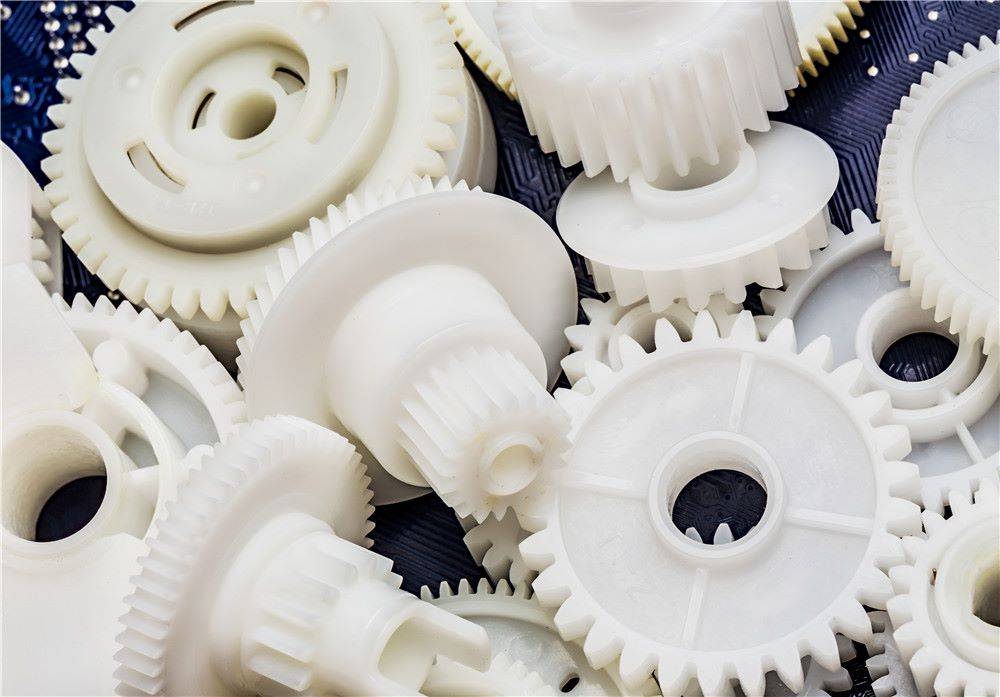
The electronics industry also stands to benefit significantly from advancements in oxide ceramics. These materials are already used in integrated circuit substrates due to their excellent electrical insulation properties and thermal conductivity. As electronic devices become smaller and more powerful, the demand for materials that can efficiently dissipate heat and maintain performance under high-stress conditions will increase. Oxide ceramics are well-positioned to meet these demands, potentially leading to innovations in semiconductor technology and next-generation electronic devices.
Moreover, in the renewable energy sector, oxide ceramics could play a crucial role in improving the efficiency and durability of energy storage systems, such as batteries and fuel cells. Their high thermal stability and resistance to chemical degradation make them ideal for use in these applications, which often operate under extreme conditions.
In summary, the future prospects of oxide ceramics are bright, with potential applications spanning multiple high-tech fields. As research and development continue to push the boundaries of what these materials can achieve, their impact on various industries is likely to grow, driving innovation and technological advancement.
Related Products
- Custom-Made Alumina Zirconia Special-Shaped Ceramic Plates for Engineering Advanced Fine Ceramics Processing
- Engineering Advanced Fine Ceramics Aluminum Oxide Al2O3 Heat Sink for Insulation
- Precision Machined Yttria Stabilized Zirconia Ceramic Plate for Engineering Advanced Fine Ceramics
- High Temperature Aluminum Oxide (Al2O3) Protective Tube for Engineering Advanced Fine Ceramics
- Engineering Advanced Fine Alumina Al2O3 Ceramic Rod Insulated for Industrial Applications
Related Articles
- Unveiling the Exceptional Properties and Applications of Optical Quartz Plates
- Glassware vs. Plasticware - Which is the Better Choice for Your Needs?
- The Latest Advancements in Zirconia Sintering Furnaces for Dental Applications
- Cold Isostatic Pressing for Medical Applications Challenges and Solutions
- Unlocking the Power of Optical Quartz Plates: Applications and Benefits

